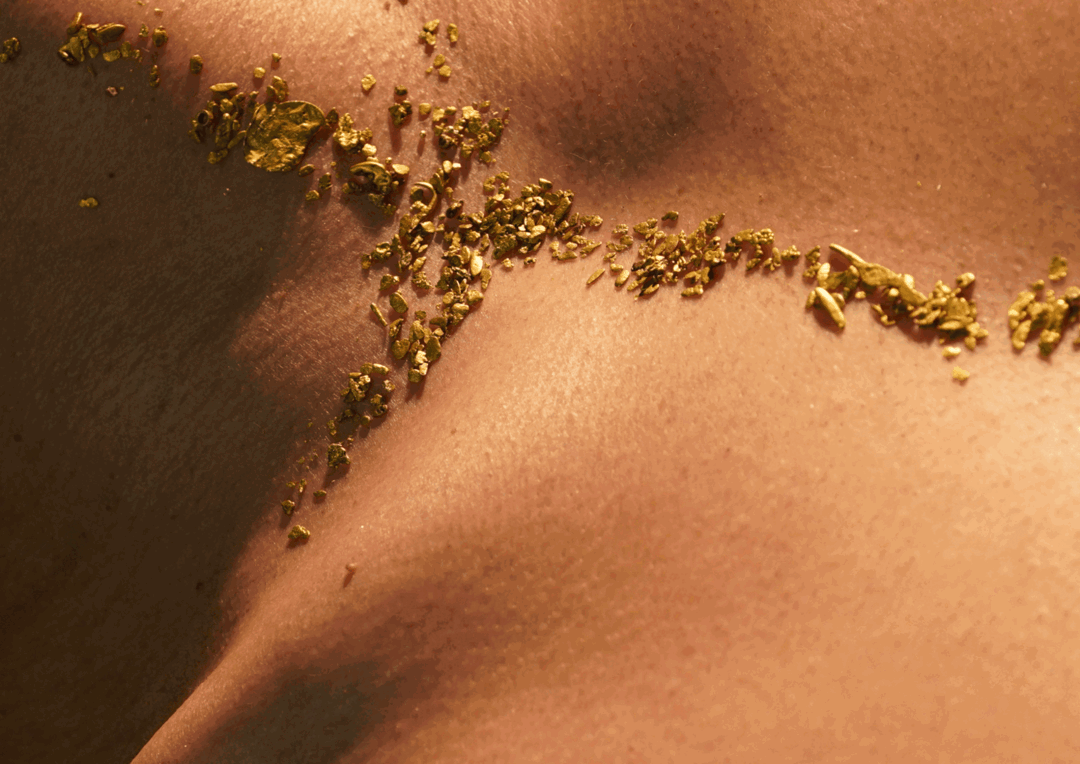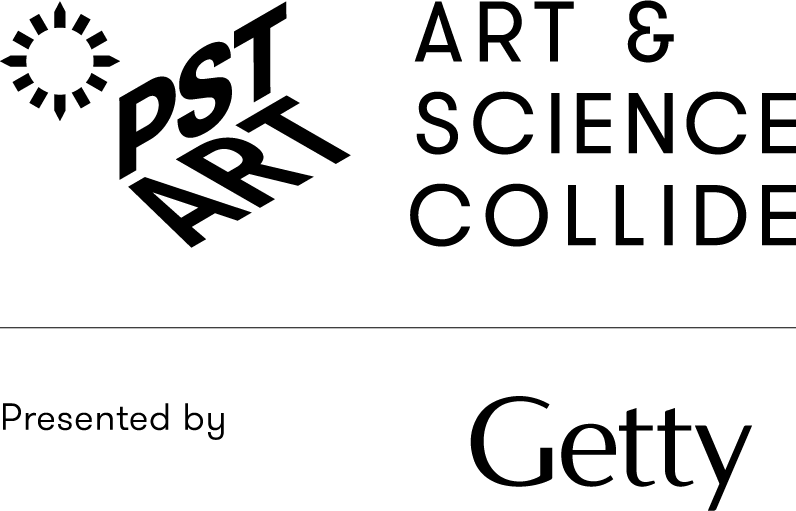
Captions (in order of appearance): Carolina Caycedo, Fuel to Fire (video still), 2023, Video, color, sound. Courtesy of the artist. Carolina Caycedo and MAB (Movimento dos Atingidos por Barragens), Águas para a vida / Water is Life, 2016, Geochoreography. Courtesy of the artist. Carolina Caycedo, The Salute of the Fish (detail), 2022. Artisanal hand-dyed cast net, embroidered patches, thread, steel, acrylic paint, lead weights. Private collection. Photograph by Ruben Diaz.
SEPTEMBER 28, 2024 – MARCH 1, 2025
OPENING RECEPTION: SEPTEMBER 28, 2024, 6:00 PM – 8:00 PM
For more than ten years, Los Angeles-based Colombian artist Carolina Caycedo has highlighted the negative effects of extractive development on land, water, and the vibrant ecologies that are bound to them. Her work asks us: how can we transition to new energy systems and paradigm shifts that prioritize a more balanced and respectful stewardship of the Earth?
We Place Life at the Center / Situamos la vida en el centro is an exhibition, publication, and educational platform that aims to address these questions, fostering dialogues around art, science, and environmental justice in Los Angeles and across the Americas. Building upon four years of research and fieldwork in frontline communities in the United States, Latin America, and the Caribbean, the project highlights diverse struggles and promotes alternative solutions to the global climate crisis rooted in ecofeminism and environmental justice. An ambitious, public-facing, and deeply educational project, We Place Life at the Center nurtures networks of learning, solidarity, and action between different social movements and organizations that are leading transition efforts throughout the Western Hemisphere.
Presented across two floors of the museum’s galleries, the exhibition assembles new and existing works by Caycedo, several of which were created as a result of the project’s research and fieldwork and are on view for the first time, alongside artworks from artists and environmental movements within Caycedo’s network. We see the exhibition not merely as a showcase of one artist’s work but as a visualization of research and affinities that provide a dynamic space for knowledge sharing and reflection across communities and geographies.
Complementing the exhibition is a suite of educational programs and events, including an international convening of artists, scientists, and grassroots environmental leaders, and a specialized course on art and environmental studies at East Los Angeles College. The project culminates with a fully-illustrated English-Spanish publication co-published with X Artists’ Books.
Artists and Environmental Movements
Pavel Acevedo, ASPROCIG, Azita Banu, Carolina Caycedo, Coyotl + Macehualli, David de Rozas, Mercedes Dorame, Annelia Hillman, Crystal Nadine Huguez, Juan José López Negrete, Tatiana Luboviski-Acosta, El Movimiento Social en Defensa de los Ríos Sogamoso y Chucurí, Movimento dos Atingidos por Barragens, Red Colombiana de energía de la Biomasa (RedBioCol), Ruta del Castor, Seres de Río, Samal Tayag, Paul Robert Wolf Wilson, and ELAC students and associates, including Mariela Barcenas, Anaid Garcia, gobbi lynn, Anaís Martínez Castañeda, Jimmy Saldivar, Mara Vera, and Yajaira Vilchis-Alvarez.
We Place Life at the Center / Situamos la vida en el centro is organized by the Vincent Price Art Museum at East Los Angeles College. The exhibition is curated by Joseph Daniel Valencia with the assistance of Nadia Estrada and Gloria Ortega.
We Place Life at the Center / Situamos la vida en el centro is among more than 70 exhibitions and programs presented as part of PST ART. Returning in September 2024 with its latest edition, PST ART: Art & Science Collide, this landmark regional event explores the intersections of art and science, both past and present. PST ART is presented by Getty. For more information about PST ART: Art & Science Collide, please visit pst.art

 We Place Life at the Center / Situamos la vida en el centro participated in the PST ART Climate Impact Program, a groundbreaking integration of climate action, community building, and data reporting as part of Getty’s landmark recurring arts event. The Vincent Price Art Museum tracked carbon emissions from exhibition travel and artwork shipping and developed programs to build community around climate action. Examples of specific climate initiatives integrated into the project include an ecological balancing program aimed at providing unrestricted funding to support the work of Indigenous and environmental justice organizations within our region. Information about the PST ART Climate Impact Program can be found at pst.art/climate
We Place Life at the Center / Situamos la vida en el centro participated in the PST ART Climate Impact Program, a groundbreaking integration of climate action, community building, and data reporting as part of Getty’s landmark recurring arts event. The Vincent Price Art Museum tracked carbon emissions from exhibition travel and artwork shipping and developed programs to build community around climate action. Examples of specific climate initiatives integrated into the project include an ecological balancing program aimed at providing unrestricted funding to support the work of Indigenous and environmental justice organizations within our region. Information about the PST ART Climate Impact Program can be found at pst.art/climate
Additional support for this project is provided through a grant from the Mellon Foundation. This project is also supported by the LA County Department of Arts and Culture as part of Creative Recovery LA, an initiative funded by the American Rescue Plan

All exhibitions and programs at the Vincent Price Art Museum are underwritten by the Vincent Price Art Museum Foundation and East Los Angeles College.